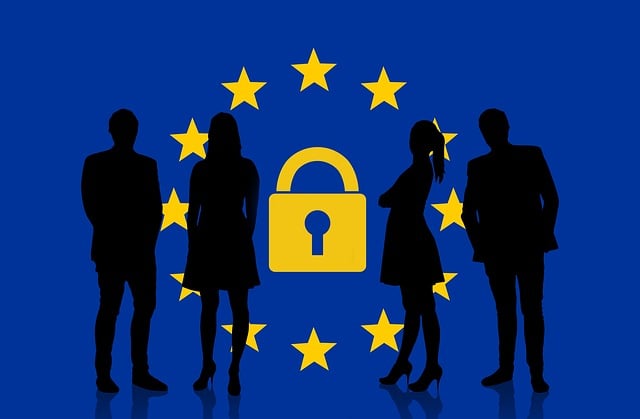Mail wire fraud, a common digital crime involving deceptive practices like phishing and impersonation, can lead to wrongful convictions with severe consequences. To overturn such convictions, individuals must understand the fraud's tactics, take proactive measures (like two-factor authentication and education), and strategically navigate legal processes. This includes reviewing evidence, identifying procedural errors, and employing specialized legal strategies in appeal and post-conviction relief efforts, ultimately aiming for a pardon or conviction vacatur with the help of criminal defense attorneys.
Mail wire fraud, a sophisticated form of criminal activity, involves manipulating electronic funds transfer systems. This article guides you through the intricate world of mail wire fraud, exploring common schemes and their devastating impacts on victims. We delve into the legal landscape, providing insights on strategies to challenge wrongful convictions. Learn the steps to overturn a conviction, from appealing the verdict to seeking potential pardons, offering a comprehensive roadmap for justice in cases of mail wire fraud.
- Understanding Mail Wire Fraud: Definition and Common Schemes
- The Impact of a Wrongful Conviction: Consequences for the Accused
- Legal Strategies to Challenge a Conviction: Building a Case
- Steps to Achieve Justice: From Appeal to Potential Pardon
Understanding Mail Wire Fraud: Definition and Common Schemes

Mail wire fraud is a sophisticated crime that has become increasingly prevalent in today’s digital age. It involves manipulating individuals or businesses through deceptive means to transfer money or sensitive information, often using electronic wire transfers. This fraudulent practice typically takes various forms, such as phishing schemes where criminals impersonate trusted entities like banks or government agencies. They may send emails or texts asking for personal financial details, enticing victims with urgent requests or promises of rewards. Another common scheme is the “man-in-the-middle” attack, where fraudsters intercept communication between parties, manipulating transactions without their knowledge.
Understanding mail wire fraud is crucial for both corporate and individual clients aiming to protect themselves from potential wrongful convictions. To counteract these schemes, several steps can be taken. Achieving extraordinary results in preventing such frauds involves enhancing security measures like using two-factor authentication, regularly updating antivirus software, and educating oneself about potential scams. Furthermore, being vigilant during financial transactions and verifying requests for sensitive information through alternative means are essential strategies to overturn a wrongful conviction and safeguard one’s respective business interests.
The Impact of a Wrongful Conviction: Consequences for the Accused

A wrongful conviction can have devastating consequences for the accused individual. Beyond the emotional trauma and loss of freedom, there are significant impacts on various aspects of their life. Once convicted, it becomes challenging to rebuild trust in systems that led to an unjust outcome. The process of reintegrating into society is often met with barriers, including limited employment opportunities and social stigma. This can lead to long-term financial instability and a sense of isolation from the community.
Understanding the importance of rectifying such mistakes, there are legal avenues for those seeking to overturn a wrongful conviction. These steps encompass reviewing evidence, identifying procedural errors during investigations, and challenging witness testimonies across the country. Whether it’s for corporate or individual clients, legal professionals play a crucial role in navigating all stages of the investigative and enforcement process. By employing these strategies, individuals wrongfully convicted can take proactive measures to restore their reputation and reclaim their lives.
Legal Strategies to Challenge a Conviction: Building a Case

When facing a mail wire fraud conviction, individuals often seek legal recourse to challenge their wrongful guilt. Building a robust case involves strategic planning and gathering compelling evidence. The first step in overturning a conviction is understanding the specific circumstances leading up to the arrest and trial. This includes examining the evidence presented during all stages of the investigative and enforcement process, ensuring that any violations of legal rights were documented and can be proven.
Legal strategies may include challenging the admissibility of evidence obtained through illegal means, disputing the interpretation of complex financial transactions, or demonstrating that the accused lacked the intent to defraud. Jury trials play a pivotal role in these cases, where both sides present their arguments and evidence. By presenting a well-structured defense, including character witnesses and expert testimony, individuals can aim to sway public opinion and ultimately avoid indictment for offenses they did not commit.
Steps to Achieve Justice: From Appeal to Potential Pardon

Seeking justice after a wrongful conviction is a complex process that requires careful navigation through the legal system. The journey to overturning a guilty verdict starts with an appeal, where legal teams present evidence and arguments to challenge the initial ruling. This step is crucial in the pursuit of Steps to Overturn a Wrongful Conviction, as it provides an opportunity to expose procedural errors or misinterpretations of facts. If the appeal is unsuccessful, the next avenue could be post-conviction relief, which allows for further review of the case, often focusing on newly discovered evidence or ineffective assistance of counsel.
For his clients facing white collar and economic crimes, a skilled general criminal defense attorney can guide them through these processes, ensuring every legal option is explored. This may include filing motions to reopen cases, presenting new witness testimonies, or arguing against inconsistent forensic evidence. Ultimately, the goal is to secure a pardon or vacatur of the conviction, bringing closure and relief to those wrongfully accused.
Mail wire fraud can have devastating consequences, especially when an innocent person is wrongfully convicted. Understanding the intricacies of this crime and employing strategic legal tactics are crucial steps in overturning a wrongful conviction. By familiarizing oneself with common schemes, gathering robust evidence, and navigating the legal system effectively, individuals and their advocates can build a compelling case to achieve justice. The process may be complex, but it is possible to challenge a conviction and set the record straight through diligent efforts and the appropriate legal procedures, including appeals and pardons.






